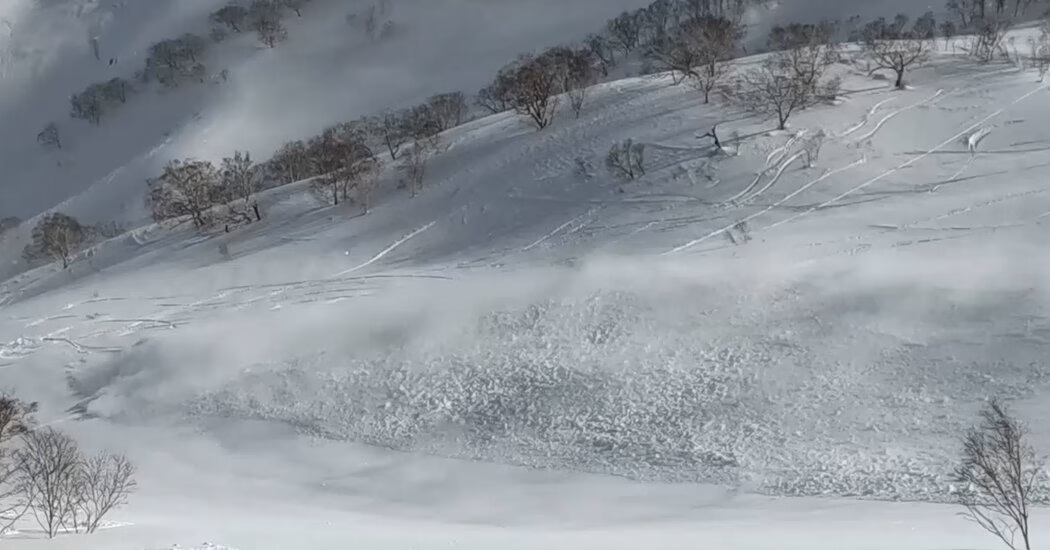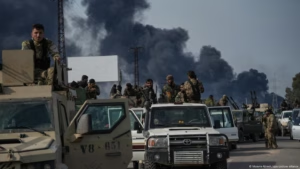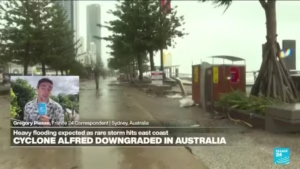Ski resorts in Japan are known for having some of the deepest, lightest powder available. A winter with exceptionally heavy snow — some areas have seen more than 12 feet of snowpack this week — should be a dream for skiers and snowboarders.
The ski terrain in Japan this winter is described as “super big and super gnarly” by Austrian professional skier Tao Kreibich, who recently ventured into the Japanese backcountry and stated in a video, “You can do some crazy stuff.”
Yes, but …
While many of Japan’s approximately 500 ski areas are enjoying a banner season, giant snowdrifts have led to challenges that have impacted profits and raised safety concerns.
Heavy snow is both a delight and a worry for resort workers. Shinichi Imoto, a spokesperson for Washigatake Ski Resort, which is experiencing some of the largest drifts in over a decade, noted, “There are concerns whether it snows or not.”
Some resorts have had to close lifts to give crews more time to shovel out. Road closures have severed access for visitors, and in some places, more skiers and snowboarders than usual have gotten lost or stuck in avalanches.
Normal operations have resumed at many ski resorts. However, the effects of last month’s snowstorms, which led to school closures, the cancellation of trains, and flights, are still being felt.
At Kagura Ski Resort, visitor numbers are down this year despite good and plentiful snow, a spokesman, Kazuto Harasawa, reported.
Unusually heavy snow forced the resort to close six times last month, and the closure of a nearby highway did not help. The resort pleaded with visitors via social media in late February, explaining that they were experiencing record-breaking snow and their staff was exhausted.
The snow also forced Gala Yuzawa Snow Resort to close for a day in late February — its first closure in over 30 years. A spokesman, Takashi Onozuka, described this season’s snowfall, which is about two and a half times last year’s, as “disaster level.”
Although customers have been pleased with the quality of the snow, it has been tough on workers, he said.
Even if ski lifts and other areas can be cleared, heavy snow poses safety risks on trails and in backcountry areas.
In the United States, most skiing deaths result from collisions with trees, according to data from the National Ski Areas Association, with avalanches and falls into deep, loose snow around big trees being other common causes of death.
In Japan, by late January, there had been 28 cases of people becoming stranded in the mountains while backcountry skiing on the northern island of Hokkaido, more than twice as many as the previous season, according to local police data. This data was compiled before early February, when Obihiro, a city in southern Hokkaido, experienced a national record of 50 inches of snow over 12 hours.
Mr. Kreibich, the Austrian skier, understands the risks of skiing off piste.
He and a cameraman, Gabriel Koschier, flew to Japan on a whim in early February due to less favorable snow conditions in the Alps. They visited a resort in the Hakuba Valley which had hosted events during the 1998 Nagano Winter Olympics.
They took a lift to the resort’s highest point and hiked up for an hour, searching for pristine backcountry terrain. Mr. Kreibich noted in a phone interview, “Even though I’m chasing snow all over the world, I think I’ve never seen so much snow anywhere.”
Despite the sunshine and excellent powder, Mr. Kreibich and Mr. Koschier began to observe cracks in the snowpack as they skied across a windswept, nearly treeless ridgeline. Mr. Kreibich mentioned that the snow beneath his feet felt “a little weird.”
Then Mr. Koschier slid approximately 1,000 feet in an avalanche. He survived, shaken but uninjured. Despite the snow being deep enough to bury him, he managed to slide on top of it rather than underneath.
After locating Mr. Koschier’s skis, the duo returned to the resort on gentler terrain. “From that point, we just enjoyed going down and taking it easy,” Mr. Kreibich said.
That night, they celebrated their good fortune over sake.
Source: https://www.nytimes.com/2025/03/08/world/asia/japan-snow-ski-resorts.html





